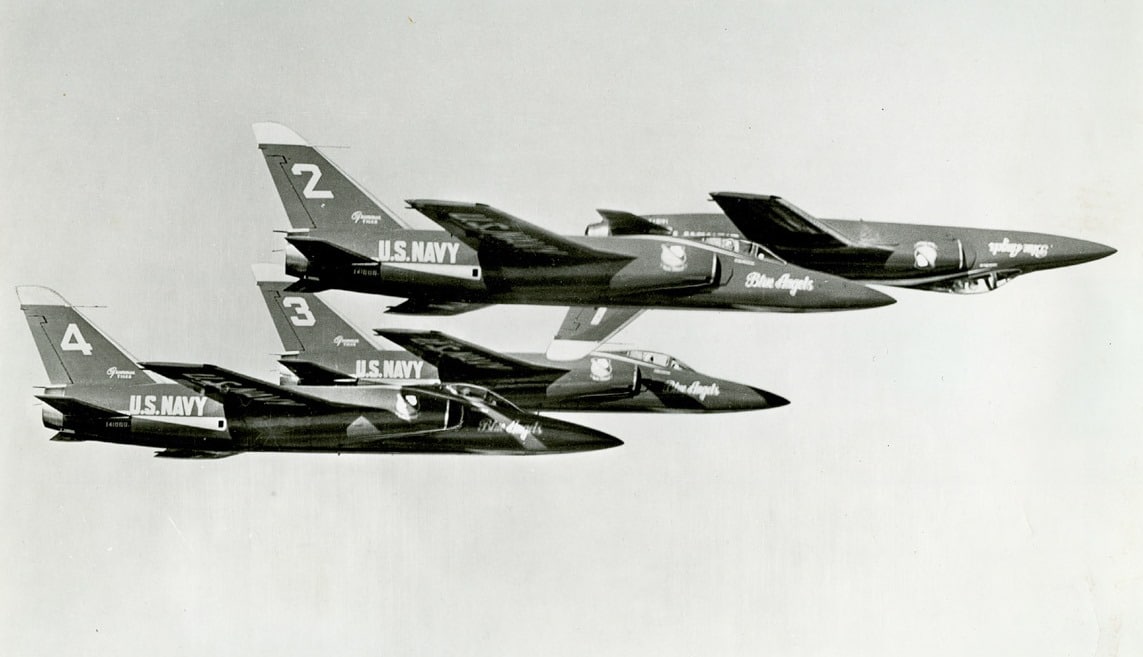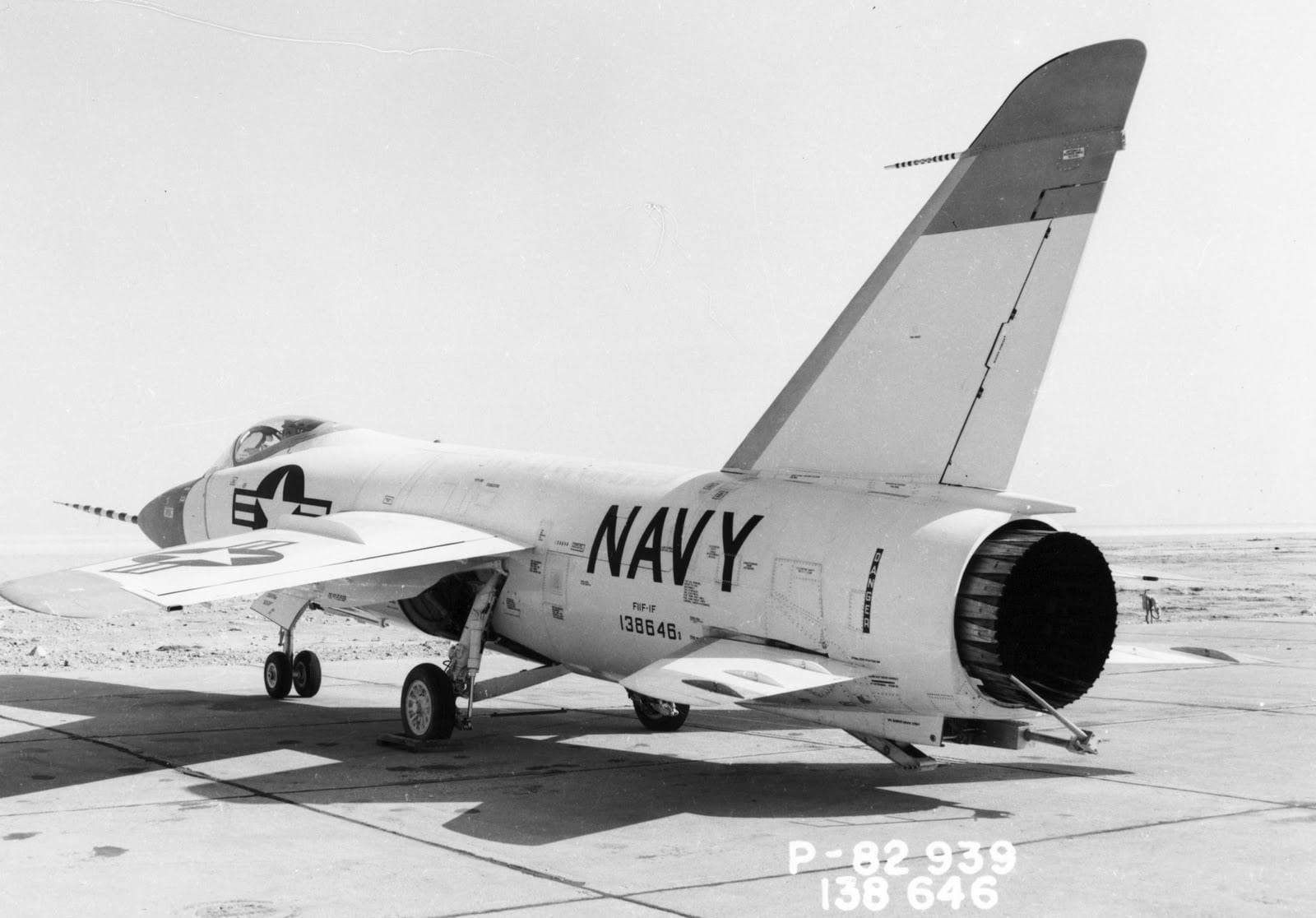Training the Supersonic Pilots of Tomorrow
Tigers did continue to serve with the Naval Air Training Command. Two South Texas-based Advanced Training Units (ATU-203 [later VT-23] and ATU-233 [later VT-26]) used F-11Fs to give students a taste of supersonic flight during their advanced jet training syllabus up until 1967. Having flown the TF-9J Cougar during their penultimate training flights, each student flew the Tiger a few times before advancing to their replacement air groups (RAGs) to fly their fleet aircraft.

Long-Time Blue Angels Steed
The F11F-1/F-11A enjoyed its longest tenure with none other than the United States Navy Flight Demonstration Team, AKA the Blue Angels. The Blues flew their shows in the Tiger from the 1957 show season through the 1968 show season. For the 1969 show season the Blues switched to the F-4 Phantom II.

So You Say a Tiger Shot Itself Down?
One dubious distinction the F11F-1 could not live down is that it was the first jet aircraft known to have shot itself down. On 21 September 1956, after test-firing its 20 millimeter guns in a shallow dive, a hapless Tiger pilot steepened his dive but flew the same heading. When the pilot pulled up out of his dive, the rounds he fired, their trajectory having decayed in the interim, intersected with his aircraft. The pilot survived; the Tiger did not.

Almost Gone North
The Royal Canadian Air Force (RCAF) evaluated the Tiger as a potential replacement for their F-86 Sabres during the late 1950s. The F11F-1 was compared to the Lockheed F-104 Starfighter by highly experienced RCAF pilots at Edwards Air Force Base in California. The Canadians picked the F-104.

Super Tiger: First Navy Jet to Mach 2
Grumman did propose a more advanced version of the Tiger known (inevitably) as the F11F-1F Super Tiger. Essentially a stock Tiger with a General Electric J79 engine stuffed inside, the Navy authorized two F11-1F Super Tigers for testing and evaluation. Taking to the air for the first time on May 25th 1956, the first Super Tiger attained a speed of Mach 1.44. It was the first naval aircraft on the planet to reach Mach 2.04 – even before the Crusader or the Phantom II.

Super Tiger Not Quite Super Enough
Although the service ceiling of the aircraft was nominally 59,000 feet, a Super Tiger test flight on April 18th 1958 at Edwards AFB set a then world altitude record of 76,938 feet. But even though the Super Tiger surprised everyone (including Grumman) with its impressive performance, the issues with endurance and range persisted. The Navy did not order the Super Tiger into production. Grumman tried to market the aircraft to foreign customers. In the end, the improved performance of the Super Tiger never overcame the design limitations.

I was a member of the F11 Tiger test team at Grumman for a long time. Worked on solving the 20 mm links and shell casings flight test and spent most of 1956 at Edwards AFB with the Super Tigers (J 79 engines ) and was there when ” gorgeous” George Watkins set the zoom climb altitude record. Was test engineer for Corky Meyer when we did the first contract spin demo at PAX River and commuted weekly from Bethpage with Corky flying a G-21 Goose as our taxi. We tried to sell the F11 vs. the F104 and didn’t convince the Air Force. The Germans bought the F104 and should have bought the F11.